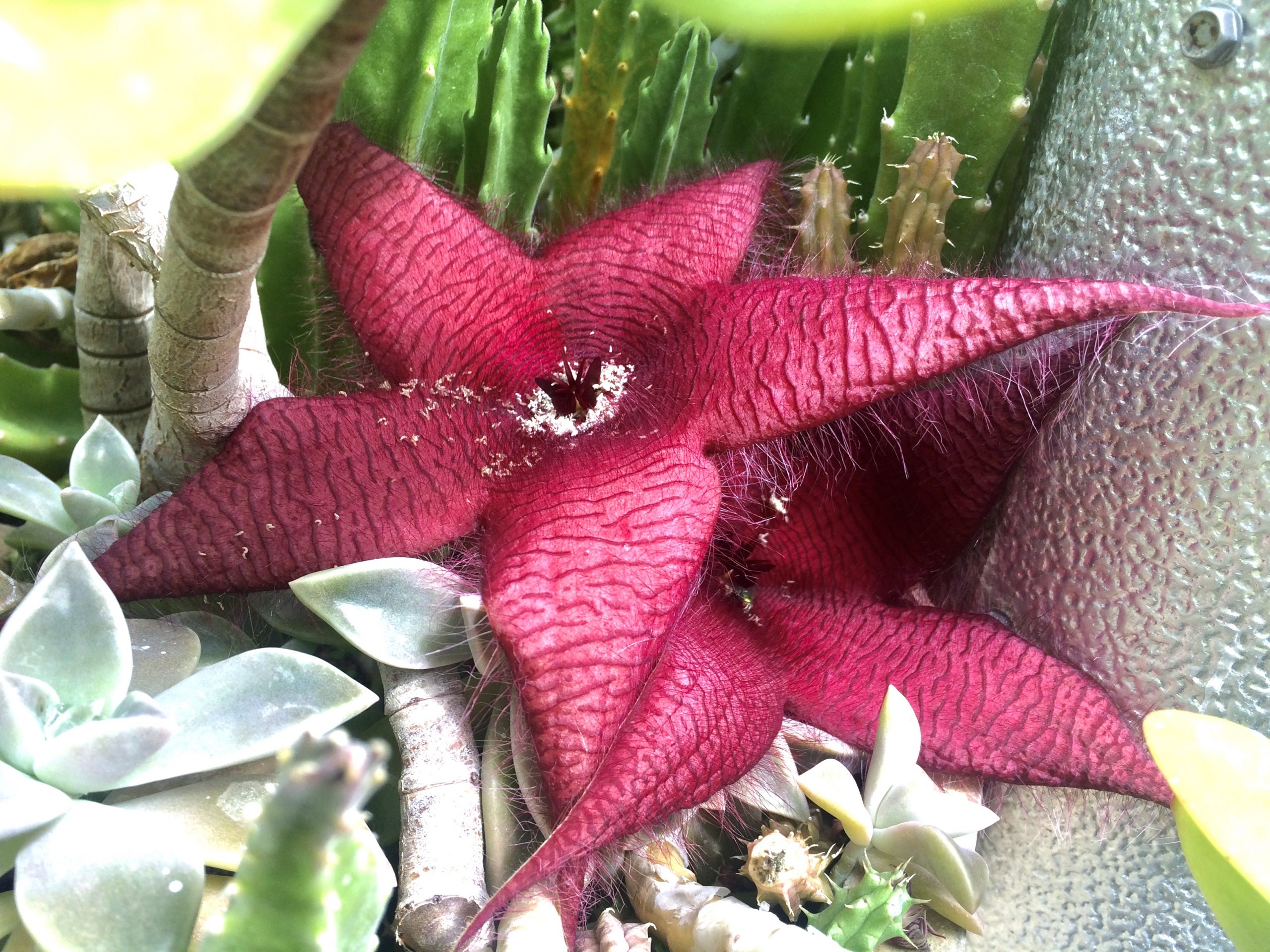The world’s smallest water lily, the Rwandan pygmy water lily, is extinct from the wild, but it has found a home at the Felmley Collections Greenhouse. The 3,311-square-foot greenhouse, located at the Felmley Hall of Science Annex, offers a refuge of color, life, and warmth to more than 600 plant species.
The greenhouse focuses on diversity and demonstrates the evolutionary path of plants. Included within the collection are nonvascular plants, ferns, conifers, and flowering plants. Some specimens have been in the collection for over 50 years; others arrived this year.
“I believe that it is very important for the University to have a botanical collection and a teaching greenhouse as part of the educational assets on campus,” said greenhouse manager Bethany Evans, M.S. ’12. “Seeing the specimens living firsthand has a considerable impact on the appreciation and understanding of the subject. A botanical collection greenhouse is also a fantastic asset to the community and provides a channel to connect the University with the larger community.”
The collection crosses disciplines, with not only biology and plant science classes utilizing the greenhouse but also art, horticulture, and teacher education. Community groups and area school groups regularly tour the facility or hold classes in the greenhouse. About 3,000 Illinois State students and 500 community visitors visit each year.
Contact Bethany Evans to set up an appointment to visit the greenhouse.
Greenhouse highlights
Here are 10 unique plants living inside the greenhouse
Giant toad flower (Stapelia grandiflora)
This succulent, native to southern Africa, has a large 8-inch-wide bloom resembling a starfish. The blooms attract its pollinator, a fly, by looking and smelling like rotting flesh.
Wollemi pine (Wollemia nobilis)
This is an endangered evergreen in the Araucariaceae family that, despite its common name, is not actually a pine. This tree was thought to be extinct until it was discovered in 1994 in Wollemi National Park in Australia. It is at extremely high risk of extinction in the wild, and fire has recently been threatening this population.
Water fern (Azolla caroliniana)
A small floating fern that has filaments of nitrogen-fixing cyanobacteria growing within it. This curious relationship benefits other plants by providing “green fertilizer” and is therefore often utilized in agricultural settings, such as rice and coffee plantations.
Night-blooming cereus (Hylocereus undatus)
Night-blooming cereus is a tropical, often epiphytic cactus native to Mexico and parts of Central America. The magnificent night-blooming flowers reach sizes up to 14 inches long. Fruit produced by this species is known as pitaya or dragon fruit.
Japanese lantern (Hibiscus schizopetalus)
The Japanese lantern is native to Kenya, Tanzania, and northern Mozambique. The common name refers to the resemblance of the flower to a Japanese lantern.
Fern palm (Cycas circinalis)
The greenhouse’s collection features nine of the 11 genera of cycads—the dinosaurs of the plant world. Contrary to the common name, this is not a fern or a palm. Cycads are dioecious (separate male and female plants) and produce reproductive cones.
Welwitschia (Welwitschia mirabilis)
Welwitschia is endemic to the Namib desert in Africa. This plant has only two leaves; these strange leaves grow slowly from the basal meristem. Welwitschia is a member of the gnetophytes, and there are three peculiar genera of gymnosperms that have affinities to flowering plants. All three genera—Gnetum, Ephedra, and Welwitschia—are represented in the collection.
Rwandan pygmy water lily (Nymphaea thermarum)
This lily is a tiny and incredibly rare specimen in the collection. The only known wild population was found near a hot spring in southwestern Rwanda. Agricultural over exploitation of the water source destroyed the water lily’s native habitat, and it has gone extinct in the wild. Thanks to propagation efforts at the Royal Botanic Gardens, Kew in England, Illinois State University has obtained a specimen for the greenhouse collection and is working to further perpetuate the population.
Titan arum/corpse flower (Amorphophallus titanum)
Native to Sumatra, this giant plant rarely blooms but puts on quite a show when it does. It takes seven to 10 years for the plant to gather ample energy to bloom and will then only bloom every few years. The inflorescence grows up to 23 feet tall and smells extremely foul, like carrion, and only blooms for approximately 24 hours. The greenhouse’s specimen has yet to bloom but has reached a mature age.
Clock vine (Thunbergia mysorensis)
This beautiful flowering vine is native to southern India. It has pendulous blooms that are pollinated by birds.


